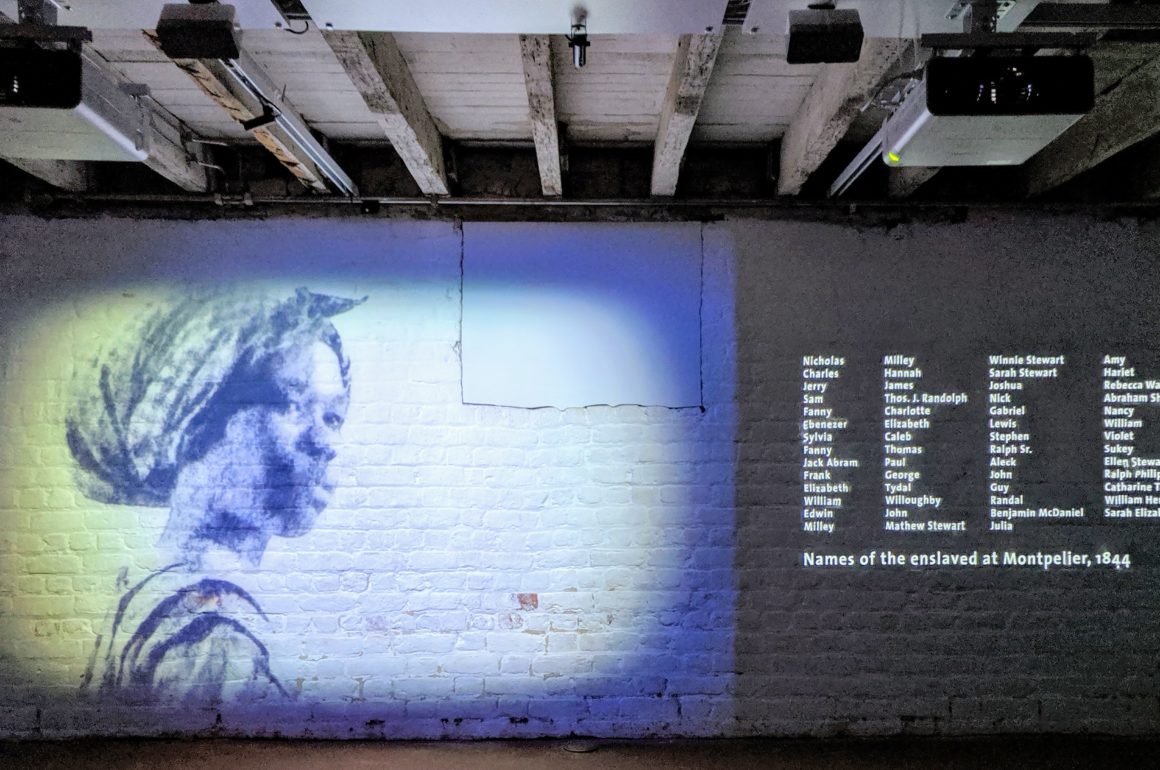
I couldn’t help but notice the boxes of tissue as we entered the screening room at James Madison’s Montpelier. By the end of the film, I understood the need. Although it didn’t actually bring tears to my eyes, the story of Ellen and the enslaved community in which she lived at Montpelier, tugged at my heart. It left me wanting to learn more.
The Nation’s Capital
One of the best perks about living on the east coast, and somewhat near Washington, DC, is the multitude of historical events that have taken place all within a few hours drive of the nation’s capital. We’re determined to visit as many of them as we possibly can. It’s a tough gig, but we’re up to the challenge.
Just shy of three hours outside of Washington, DC lies the former home of President James Madison and his wife, Dolley. Known as James Madison’s Montpelier, the plantation encompasses nearly 3,000 acres and dates back to James’ grandfather, Ambrose, in the early 1700’s.
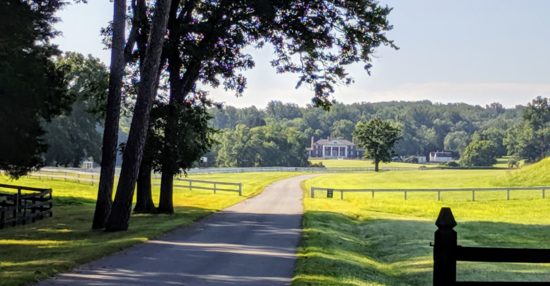
James Madison
Visiting a plantation is a conundrum for the thought process. It’s a contradiction of the senses. Our eyes see a beautiful sprawling estate that hosted a lifestyle unknown to most, surrounded by manicured gardens and well-kept fields of farm land. While our eyes see the beauty, our minds struggle to appreciate said beauty knowing it was built on the backs of the enslaved.
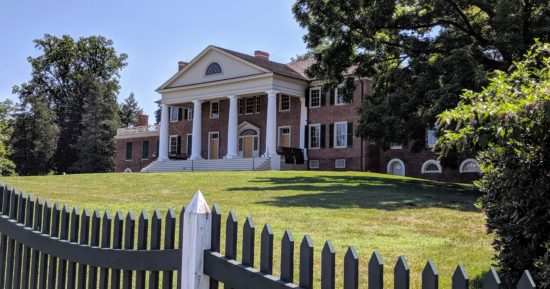
James Madison was a man before his time in many ways. He was an enlightened thinker and highly educated. He was the father of the Constitution and the Bill of Rights, and yet he owned an enslaved community. It’s too easy to justify slavery by brushing it off as the cultural norms of the day, etc. Of the first 18 presidents, only five of them did not own slaves. If those five figured it out, why not the rest? Economics.
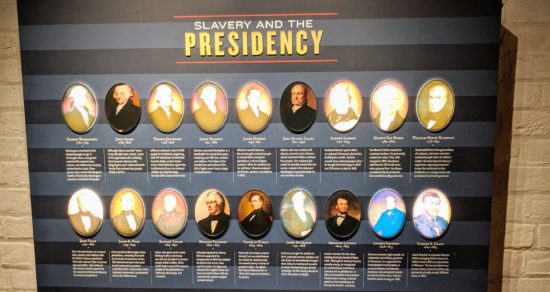
The Hypocrisy of a President
What’s fascinating, and yet thoroughly hypocritical about Madison, is that he wrote about and spoke out against slavery, but he never freed his enslaved community. Some 300 enslaved people lived and toiled for generations, at Montpelier, from the 1730’s to the 1840’s. Even upon his death Madison did not free his slaves. That concept in itself is another conundrum of thought. It’s okay to own the enslaved as long as I free them when I die?
- “Although all men are born free, slavery has been the general lot of the human race. Ignorant–they have been cheated; asleep–they have been surprised; divided–the yoke has been forced upon them. But what is the lesson…? The people ought to be enlightened, to be awakened, to be united, that after establishing a government they should watch over it…. It is universally admitted that a well-instructed people alone can be permanently free.” James Madison
James Madison’s Montpelier
With all of that being said, let me tell you about our experience visiting James Madison’s Montpelier. Simply stated, it was extraordinary. I’ve always believed that in order to move forward through this life, we have to understand the past. History is not boring, as I used to tell my sixth grade students, history is life. History is fascinating. To walk in the path of those who came before us lends itself to how we move forward. History comes full circle. Sometimes we learn from it, sometimes… not so much and we’re destined to repeat the worst of it.
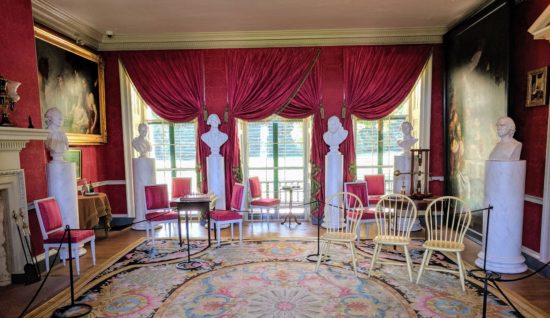
Our day started with a 10:00 a.m. house tour. Let me take a moment to offer a big shout out to Bob, our docent, who on that day celebrated his 60th wedding anniversary by sharing his knowledge of the president and his enslaved community. Well-done Bob. What’s especially fascinating about the home is, of course, the history. At noon, we joined Bob once again for an in-depth discussion/tour of the enslaved community. He was a walking personable history book.
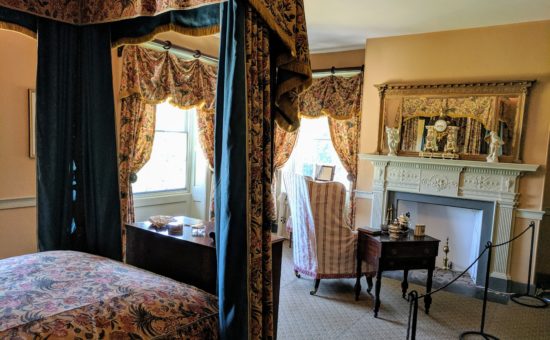
If Walls Could Talk
It’s a long story so I’ll offer a quick snippet. After Madison passed away he left the estate to Dolley. Dolley had a son from her first marriage who had more than his share of issues, and Dolley left him in charge of the plantation while she retired to Washington, DC. Payne (appropriately named) ran the plantation in to debt forcing Dolley to sell most of the enslaved community and eventually she sold Montpelier.
The plantation went through a series of owners until 1901 which is when the du Pont family purchased the home. Daughter Marion lived her life at Montpelier and reinvented the plantation in to a horse farm. Upon her death the plantation was left to National Trust for Historic Preservation.
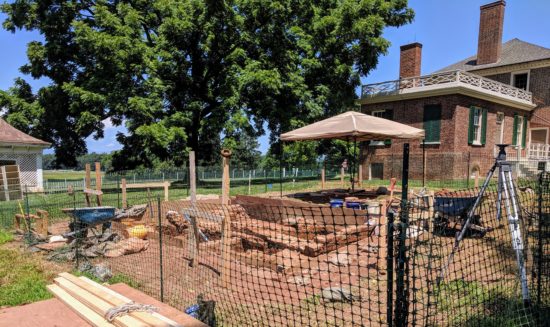
I say all of this because it’s important to know that the du Pont family added 26 rooms to the home. All of those rooms are now gone, with the exception of one which was taken apart and rebuilt at the visitor’s center. Through the efforts of the foundation and donations, James Madison’s Montpelier has gone through extensive restoration and now stands as it stood when James and Dolley owned the plantation. Impressive.
An Enslaved Community
What’s equally impressive is that the restoration of the plantation includes telling the story of the enslaved community. What impressed us the most is that the exhibits and the docents don’t shy away from the ugly underbelly of slavery and how it impacted the lives of not only those who lived and toiled on the plantation, but the impact on their descendants as well.
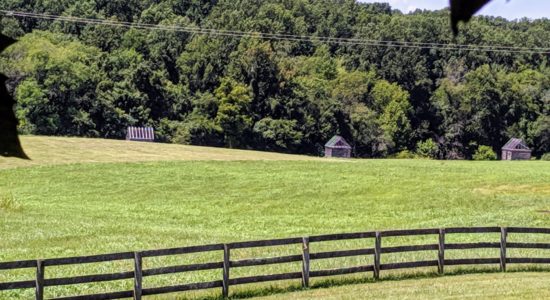
The Mere Distinction of Colour
- “We have seen the mere distinction of color made in the most enlightened period of time, a ground of the most oppressive dominion ever exercised by man over man.” James Madison
One of the most powerful exhibits at the plantation is The Mere Distinction of Colour. Housed in the cellars of the home, there are detailed accounts of the daily life of the enslaved and two exceptional videos. One of which tells the story of Ellen (I mentioned the boxes of tissues) and one of which draws a direct connection to the issues of today.
- “I think our problem as Americans is that we actually hate history, so we can’t really connect the dots. What we love is nostalgia. We love to remember things exactly the way they didn’t happen. History itself is often an indictment. And people? We hate to be indicted.” Regie Gibson
Montpelier & Archaeology
Montpelier is also an active thriving archaeological site and a visit to the laboratory should not be missed! The lab staff welcomes visitors and they are eager to share their treasures and knowledge of Montpelier.
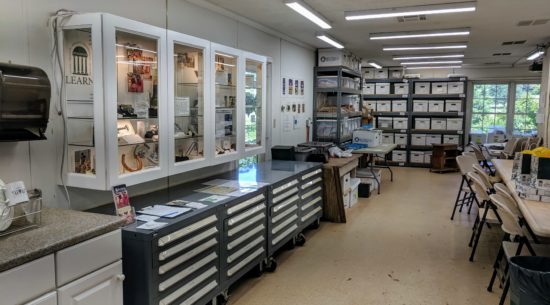
Living History
A visit to James Madison’s Montpelier is well-worth the effort. It’s a living history museum where visitors can walk in the path of those who walked before us, while enjoying the incredible beauty of the estate and embracing the lessons history continues to teach.
If You Go:
- 11350 Constitution Highway – Montpelier Station, VA 22957
- Daily Hours: 9:00 a.m. – 5:00 p.m.
- You too can be an archaeologist! Archaeology program information – email: Dig@Montpelier.org
- Ample parking available
- Beautiful visitor’s center and gift shop
- Eight miles of hiking trails ramble through the wooded estate grounds
- Amazing food and service at the Exchange Cafe! 10:00 a.m. – 4:00 p.m.
- Search and book local accommodations here
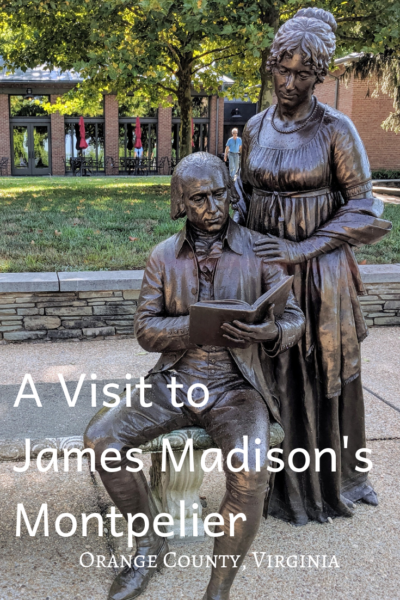





















 #postcardsfromthewo
#postcardsfromthewo





 New post on blog, link in
New post on blog, link in 






Nice tour. So glad the guides are not sugar coating the real story.
Gaelyn recently posted…Walk with me under the Bryce Canyon full moon hoodoos
It was all very well-done, Gaelyn. We learned quite a bit throughout the day.
Patti, I did not know much about this US President, so it is really interesting to find out. Fantastic that you live in an area rich in culture and history, I will be looking forward to learn more about the treasures you uncover there. I like when places like this are preserved to tell the truth, exactly as it happened. Not embellished or a one sided history lesson. As you pointed out we must learn from the past in order to ensure a better future. Thank you for a beautifully written post.
Our thoughts exactly, Gilda. We always look for the story behind the scenes and the history. It’s one of our favorite aspects of travel.